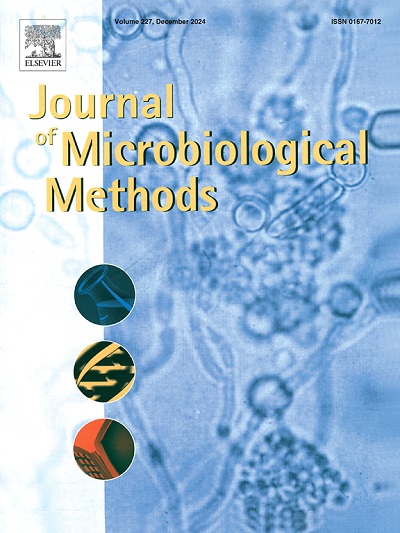Identification of bacterial infection types in decomposition stages at various temperatures using pathology images and artificial intelligence algorithms
IF 1.9
4区 生物学
Q4 BIOCHEMICAL RESEARCH METHODS
引用次数: 0
Abstract
Bacterial infections present a significant threat to human health, and accurate identification of infection type is crucial for both clinical and forensic applications. Although traditional diagnostic methods are reliable, they are often time-consuming, require specialized personnel and equipment, and have limited accessibility. Previous studies have demonstrated that pathology images combined with artificial intelligence (AI) algorithms can effectively classify bacterial infections in fresh tissue samples. In this study, we extend this approach to identify bacterial infection types in decomposed tissue under varying temperature conditions. Our findings indicate that decomposition factors, such as putrefaction and autolysis, do not impair model performance. The model exhibits strong classification efficacy across all tested temperatures (25 °C, 37 °C, and 4 °C), demonstrating robustness and generalizability. The overall area under the curve (AUC) values exceeded 0.920 and 0.820 at the patch and whole slide image (WSI) levels, respectively, in the training and testing sets, while surpassing 0.990 at the patch-level in the external validation set. These results confirm that AI-driven computational pathology can reliably distinguish bacterial infection types, even in decomposition states. Our method offers a novel approach for bacterial diagnosis in forensic pathology and supports infection prevention during autopsies.

利用病理图像和人工智能算法识别不同温度下分解阶段的细菌感染类型
细菌感染对人类健康构成重大威胁,准确识别感染类型对于临床和法医应用都至关重要。虽然传统的诊断方法是可靠的,但它们往往耗时,需要专门的人员和设备,并且可及性有限。先前的研究表明,病理图像与人工智能(AI)算法相结合,可以有效地对新鲜组织样本中的细菌感染进行分类。在这项研究中,我们将这种方法扩展到在不同温度条件下分解组织中的细菌感染类型。我们的研究结果表明,分解因素,如腐烂和自溶,不会损害模型的性能。该模型在所有测试温度(25°C、37°C和4°C)下均表现出较强的分类效率,具有鲁棒性和通用性。在训练集和测试集的patch和whole slide image (WSI)水平上,总体曲线下面积(AUC)值分别超过0.920和0.820,而在外部验证集的patch水平上,AUC值超过0.990。这些结果证实,人工智能驱动的计算病理学可以可靠地区分细菌感染类型,即使在分解状态下也是如此。我们的方法为法医病理学中的细菌诊断提供了一种新的方法,并支持尸检过程中的感染预防。
本文章由计算机程序翻译,如有差异,请以英文原文为准。
求助全文
约1分钟内获得全文
求助全文
来源期刊

Journal of microbiological methods
生物-生化研究方法
CiteScore
4.30
自引率
4.50%
发文量
151
审稿时长
29 days
期刊介绍:
The Journal of Microbiological Methods publishes scholarly and original articles, notes and review articles. These articles must include novel and/or state-of-the-art methods, or significant improvements to existing methods. Novel and innovative applications of current methods that are validated and useful will also be published. JMM strives for scholarship, innovation and excellence. This demands scientific rigour, the best available methods and technologies, correctly replicated experiments/tests, the inclusion of proper controls, calibrations, and the correct statistical analysis. The presentation of the data must support the interpretation of the method/approach.
All aspects of microbiology are covered, except virology. These include agricultural microbiology, applied and environmental microbiology, bioassays, bioinformatics, biotechnology, biochemical microbiology, clinical microbiology, diagnostics, food monitoring and quality control microbiology, microbial genetics and genomics, geomicrobiology, microbiome methods regardless of habitat, high through-put sequencing methods and analysis, microbial pathogenesis and host responses, metabolomics, metagenomics, metaproteomics, microbial ecology and diversity, microbial physiology, microbial ultra-structure, microscopic and imaging methods, molecular microbiology, mycology, novel mathematical microbiology and modelling, parasitology, plant-microbe interactions, protein markers/profiles, proteomics, pyrosequencing, public health microbiology, radioisotopes applied to microbiology, robotics applied to microbiological methods,rumen microbiology, microbiological methods for space missions and extreme environments, sampling methods and samplers, soil and sediment microbiology, transcriptomics, veterinary microbiology, sero-diagnostics and typing/identification.
 求助内容:
求助内容: 应助结果提醒方式:
应助结果提醒方式:


